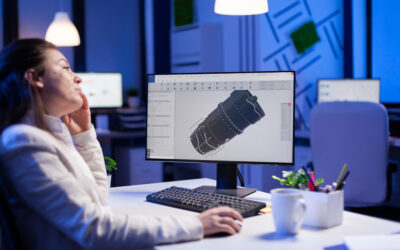A vending machine is an automated machine that provides consumable items (snacks, beverages, cigarettes, and lottery tickets) to consumers in exchange for cash, coin, or credit. Vending machines are now commonplace and can be seen operating in shops, malls, parks, subways, and airports across the world.
In the late 18th century, vending machines that exchanged coins for consumable items were introduced. John Greenwich was the first to introduce vending machines in 1965 that took paper money, facilitating the purchase process.
Facts about vending machines
Some interesting facts about the Vending Machines are listed below:
- Around 15 million vending machines exist globally, 7 million of which are present in the United States and 5 million in Japan. The global vending machine business is valued at 51.91 billion as of 2021.
- Vending machines not only provide snacks but almost every consumable item one can think of can be bought. Entire meals, clothes, consumables, hygiene products, hot and cold beverages, and even electronics can be bought.
- Small shops can be replaced with vending machines as this is a cost-effective and power-efficient solution.
- Grabbing consumables is now a matter of seconds without the need of having to travel to the market.
- The COVID crisis made people value the importance of vending machines due to a higher level of hygiene since no human interaction is involved.
- Vending Machines serve as a great source of passive income.
Vending machine design initiation
Design for vending machines includes multiple functional and aesthetic features which should be clearly evaluated before the machine is manufactured.
The following should be kept in mind while designing custom vending machines:
- Refrigeration requirements
If the vending machine is going to be used for storing and dispensing refrigerated products, the design team should first calculate the required cooling load. The load is then used to determine the refrigeration equipment like the compressor, the pump, the condenser, etc. to attain the specified temperature.
Special attention should be given to the selection procedure of components. Off-the-shelf components allow for easy selection, configuration, and troubleshooting if needed. Any motors, actuators, rails or light fixtures that are meant to be present within the compartment should be resistant to cold and humid environments to prevent the development of rust or an electrical short due to condensation. Hence, special temperature/water-resistant components are used for the vending machine design.
- Body design
Parameters like the tray count, stacking configuration, and items per tray have a huge effect on the internal and external dimensions of the body. To tackle this, technical data sheets and dimensioned diagrams should be used to make the body designing process more efficient.
The design should also be made keeping in mind the design standards and the manufacturing methods and their limitations. An optimal manufacturing method can be chosen keeping the costs and production times to a minimum. Some parameters that govern the whole design process include the dimensions of the selected parts, housing spaces and fixtures for the parts, the body’s size constraints – usually set by the clients themselves, and the vent holes and pathways required for the operation of components that tend to overheat when operated in confined spaces.
The following includes some of the client requirements that the mechanical team at Devomech Solutions had to keep in mind for a custom vending machine project:
- A robust, reliable, and maintenance-free machine had to be constructed which also had to be visually appealing to attract customers.
- A refrigeration system had to be incorporated into the design, which meant leaving space for the refrigeration equipment.
- Insulations and Gaskets had to be included in the design to maintain a cool environment.
- The body had to be designed last as all the internal and external features had to be incorporated which would then define the final dimensions of the machine.
- Modeling
Models driven through CAD are well-suited to evaluate which model interacts the best with the design. The models can go through multiple iterations to find the best fit. During modeling, the design is also divided into different sub-designs that include the internal frame, the external body, and the electronic design. The electronic designs can include code writing, PCB Design, UI Design, problem detection, and troubleshooting. Bills of material should also be made that can be used to buy raw materials to prototype the vending machines.
- Prototyping
Prototyping includes manufacturing the major parts of the design and evaluating their performance. After the parts are made, they should be assembled and tested for their respective functions. The design should be repeatedly tested for points of failure and any possible problems should be found and resolved. Required modifications should be conducted before a final true and tested design is ready for mass-produced.
- Mass production
Once the design is finalized after the testing and refining phase, the final step is to create dimensioned drawings that can be sent to manufacturers to have the parts manufactured. The drawings include the instructions for machining the parts, the Bill of Materials, and the assembly instructions. The PCB Design and the codes must also be provided to the manufacturer so that the electronic design can also be taken care of. All this makes it possible to mass-produce the machines.



